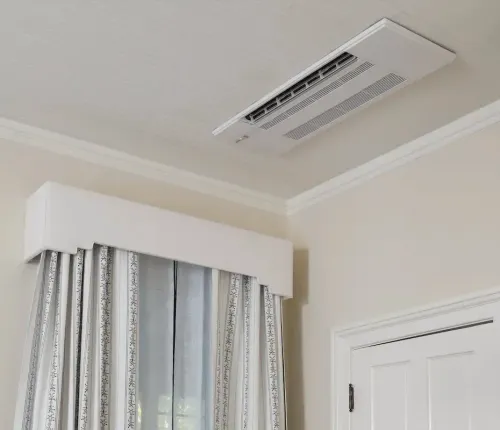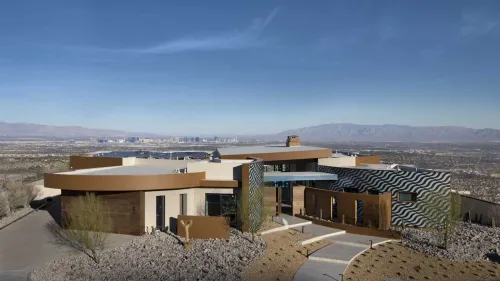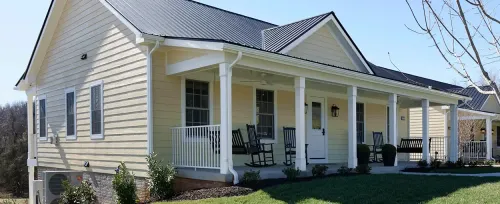Project Location: Tampa, Florida
Completion Date: December 2015
Challenge
Selecting an efficient HVAC system to help an urban school earn LEED® certificationSolution
Variable Refrigerant Flow (VRF) systems from Mitsubishi ElectricResult
High indoor air quality, year-round comfort and LEED® Silver certification
Primrose Schools provide early childhood education at over 300 franchised locations across the country. One Florida location the Primrose School of South Tampa, serving students from six weeks old to first grade—stands out as a feat of engineering and construction. Its Variable Refrigerant Flow (VRF) system from Mitsubishi Electric is a big part of that showcase, and has helped the school earn LEED® Silver certification alongside impressive energy savings.
Rick Radtke and his wife co-owned two Primrose Schools and, a few years ago, decided to build a third. Radtke has also been a building contractor since 1975. After completing over 500 commercial projects, he was very familiar with how a project’s site affects its design. Since he would also serve as the project’s construction manager, as the president of the Phoenix Construction Company of Tampa, he “wanted to really do it right. I searched for a spot for this school for 10 years. I wanted a site in the heart of the city, but still needed space for parking and playgrounds, and needed to be able to serve enough families to support the operating cost. The typical Primrose prototype is 10,000 square feet. This one is 22,000 square feet”—the largest in the country.
Once Radtke selected a city-center location, he asked around for HVAC suggestions. “I got a lot of recommendations for VRF. It’d help us get LEED points and would work on the grounds. A traditional Primrose has a condenser farm on the grounds, but I needed that space for playgrounds. With VRF, I could build a roof well—get all of the condensers up on the roof in a very small space.” Regarding the goal of LEED certification, he said, “We have a personal desire to do better by our planet.”
John Makar, Pe, president, Seeds Engineering, Inc., Wesley Chapel, Florida, served as the engineer on the project. He said, “A lot of people talk the talk. Rick walks the walk, focusing on what systems will be helpful in the future. For this school, that meant getting the most energy-efficient and cost-conscious HVAC design possible.”
He continued, “The school is in a plus [sign] shape, so we knew solar gain would occur in certain areas throughout the day. VRF allowed us to circulate refrigerant, minimizing tonnage. We could also do ducted with VRF, giving a smooth look and a way for outside air to enter the system—something we had to address to meet code.”
Mark Pavey, Aia, principal architect, Children’s Design Group, Gulf Shores, Alabama, hadn’t previously worked with VRF, but was impressed by the idea. “It seemed like a good technology for energy savings, and the ability to vary the output of the units to match the demand made it very attractive.”
Radtke said, “I liked Mitsubishi Electric, specifically, for its reputation. Everybody I talked to had the highest recommendations for Mitsubishi Electric. Contractors said it’s the manufacturer they have to service least often. So I chose it for its reliability and efficiency.”
Makar was one of those recommenders: “Mitsubishi Electric has a great capability to service the area. I know if I have a question, I can call the local rep. Lg and some others—they’re nice fellas, but they’re sometimes difficult to get in touch with.”
With the system selected, installation took place. Makar described the process as “crisp and clean.” Everything since has been smooth, as well. Radtke said, “We’re just absolutely in love with the system. The fans are on AG150 controllers, and they run 6:30 a.m. to 6:30 p.m.
All the controls are within the ductwork, so there are no thermostats on the walls. The teachers don’t even miss them; they just know it’s always comfortable in the building.”
Beyond just affording reliable comfort, the system has offered money-saving control. Radtke said, “At my other schools, you don’t know how many Saturdays I’ve gone in and the thermostat is set to hold at 70 degrees and it’s cold in there; the system’s been running all weekend. With this school, I control it all from my computer. Last week I was in Hawaii controlling a system in Florida. It’s really nice.”
The system has also offered occupants a healthy environment. Pavey said, “The indoor air quality at this school is excellent. In a split system, you have to condition to the maximum load. With this system you match the load to the capacity; it’s a huge advantage for controlling humidity.”
Radtke is also pleased with the school’s energy consumption. “I’ve built two other Primroses. This one is twice as big but my electricity bill runs about 20 percent less than the other two schools combined! While Mitsubishi Electric costs more at first, we feel that the system will pay for itself in a matter of a few years.”
The system has also allowed for easy expansion—an exciting necessity after the school experienced such success that it developed a year-long waitlist for enrollment. “We just completed a 3,000-square-foot, two-classroom addition to the original building. It uses the same Mitsubishi Electric system. It was easy to add a condenser on. I like how easy it was,” said Radtke.
He continued, “Thinking about the whole thing, we’re proud we did it—went for the VRF and LEED certification. We’re using less energy.” Pavey put this success into context: “We’re doing a lot of urban centers now as people move to cities and have babies, so it’s thrilling to see a facility like this. I’ve been doing childcare architecture for 28 years now, and this is one of the best facilities I’ve seen.”
Project Team
- Engineering: Seeds Engineering, Inc., Wesley Chapel, Florida
- Architect: Children's Design Group, Gulf Shores, Alabama
- General Contractor: Phoneix Construction Company of Tampa, Tampa, Florida
Mitsubishi Electric Equipment Installed
- (3) PURY R2-Series Outdoor Units
- (31) PVFY Concealed Vertical Indoor Units
- (1) Ag-150 Centralized Controller









